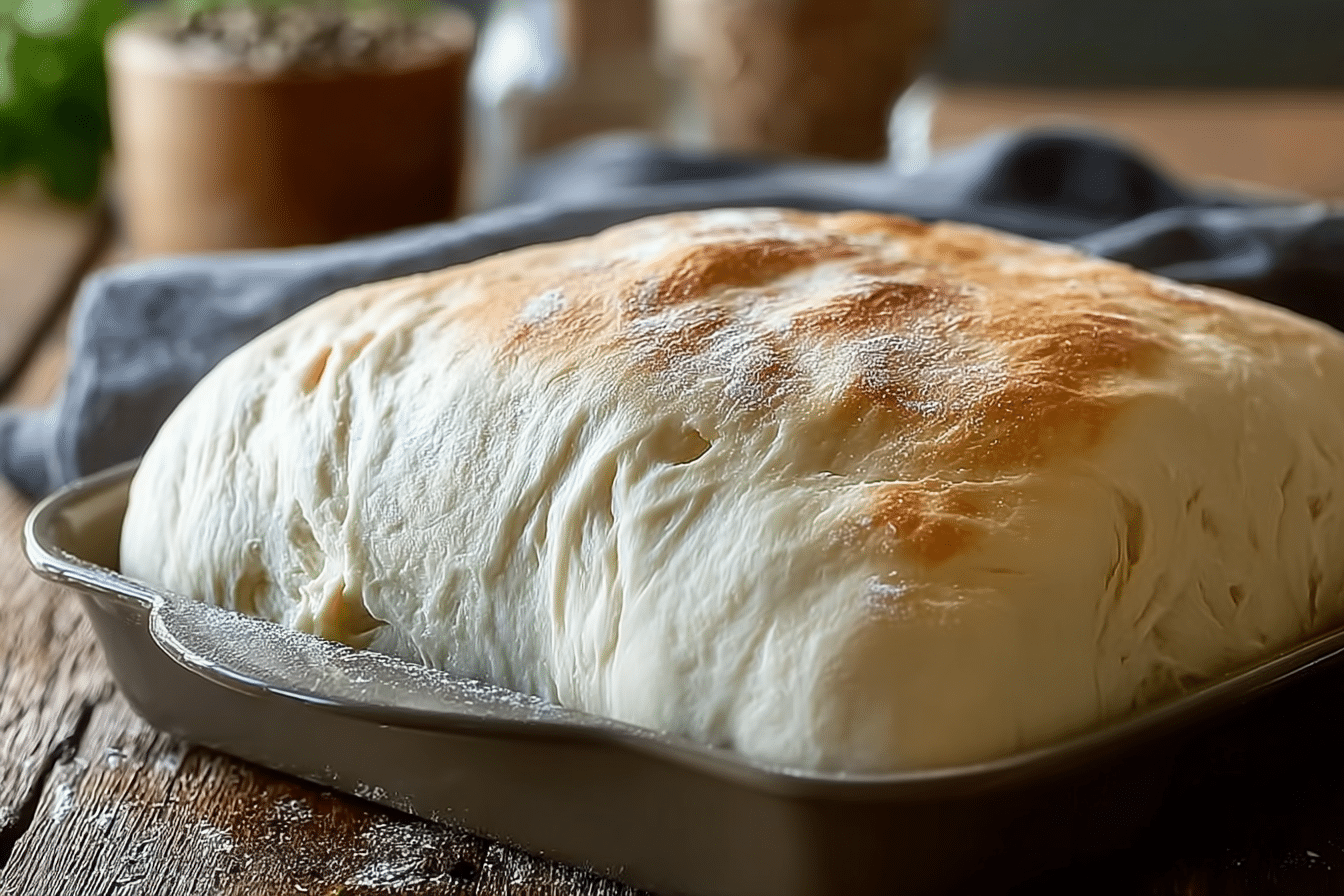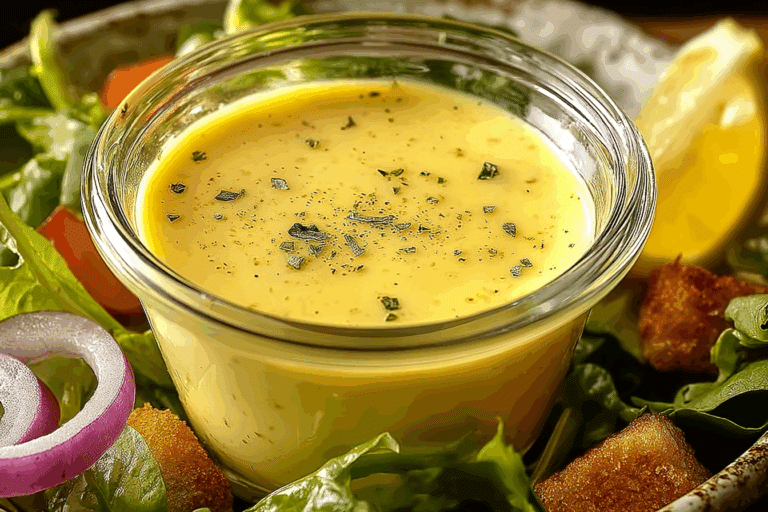Soft Homemade Bread Dough
There’s something undeniably comforting about the scent of freshly baked bread filling your kitchen. The way the dough feels beneath your hands—soft, elastic, alive—tells a story of warmth and patience. This Soft Homemade Bread Dough recipe captures that magic, giving you a foolproof base that’s perfect for loaves, rolls, or even pizza crust. Trust me, once you’ve felt this dough between your palms, you’ll never want to buy bread again.
Behind the Recipe
Every baker remembers their first perfect loaf—the one that puffed up beautifully and sliced like a dream. This recipe was born from that moment of joy. Inspired by cozy mornings spent kneading dough with my grandmother, it carries the same simplicity and care she taught me. The key was always in the touch: “If it feels like a cloud,” she’d say, “you’re on the right track.” And she was right.
Recipe Origin or Trivia
Bread-making is one of humanity’s oldest culinary traditions, dating back over 14,000 years. Each culture has its version—from France’s baguettes to India’s naan and Italy’s ciabatta. This particular dough draws on classic European techniques, combining modern baking science with old-world charm. It’s a universal foundation, the kind of recipe you’ll reach for whenever you crave comfort and creativity in one bowl.
Why You’ll Love Soft Homemade Bread Dough
This dough isn’t just about taste—it’s about experience. Here’s why it will quickly become your go-to.
Versatile: You can turn it into sandwich loaves, dinner rolls, pizza crust, or even sweet buns.
Budget-Friendly: Uses simple pantry staples, making it far cheaper than store-bought bread.
Quick and Easy: With one good rise, you’re ready to bake in no time.
Customizable: Add herbs, cheese, or seeds for your own signature loaf.
Crowd-Pleasing: That golden crust and pillowy interior never fail to impress.
Make-Ahead Friendly: Prepare it a day early and refrigerate until baking.
Great for Leftovers: Toasts beautifully and makes heavenly French toast the next morning.
Chef’s Pro Tips for Perfect Results
Before we dive into the ingredients, let me share a few tricks from the bakery bench.
- Use lukewarm water, not hot: It activates yeast without killing it.
- Knead until elastic: About 8–10 minutes by hand, or 5 minutes in a mixer.
- Oil the bowl lightly: Keeps the dough from sticking and drying out.
- Let it rise in a warm, draft-free spot: Dough loves cozy environments.
- Don’t rush it: Good bread rewards patience—the longer it rises, the better the flavor.
Kitchen Tools You’ll Need
Before you get started, gather a few simple tools to make the process smooth and enjoyable.
- Large mixing bowl: For combining and kneading the dough.
- Measuring cups and spoons: Accuracy makes the difference.
- Wooden spoon or dough hook: For initial mixing.
- Plastic wrap or kitchen towel: To cover and let the dough rise.
- Baking sheet or loaf pan: Depending on your preferred shape.
- Cooling rack: For that perfect finish once baked.
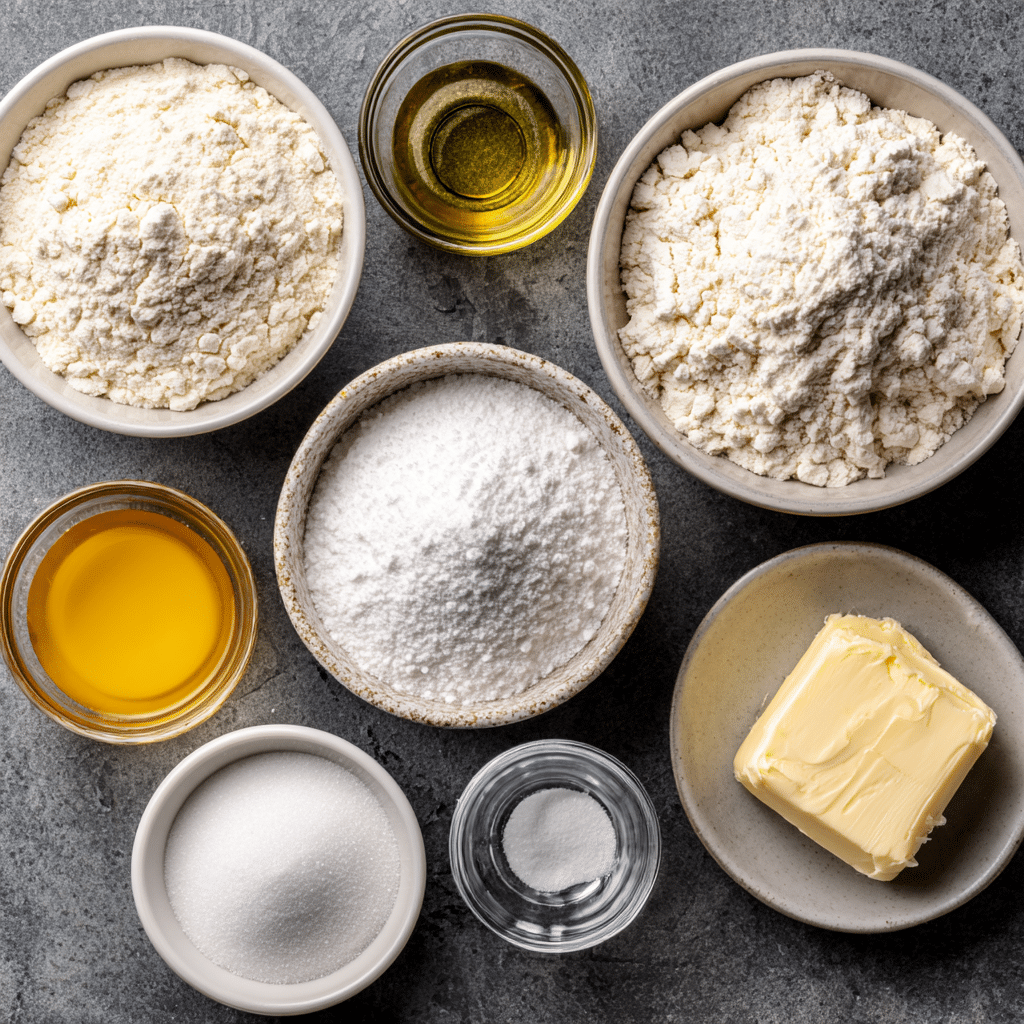
Ingredients in Soft Homemade Bread Dough
The harmony of these humble ingredients creates magic. Each one has a special role to play in achieving the perfect soft texture.
- All-Purpose Flour: 4 cups – Provides structure and elasticity.
- Warm Water: 1 ½ cups – Activates the yeast and hydrates the flour.
- Active Dry Yeast: 2 ¼ teaspoons (1 packet) – Helps the dough rise beautifully.
- Granulated Sugar: 2 tablespoons – Feeds the yeast and adds a touch of sweetness.
- Salt: 1 ½ teaspoons – Balances flavor and strengthens gluten.
- Unsalted Butter: 2 tablespoons, softened – Adds richness and tenderness.
- Olive Oil: 1 tablespoon – Keeps the dough moist and pliable.
Ingredient Substitutions
If you’re missing something, don’t worry—there are plenty of ways to adapt.
All-Purpose Flour: Substitute with bread flour for extra chewiness.
Active Dry Yeast: Use instant yeast; skip the proofing step.
Unsalted Butter: Replace with coconut oil or margarine for a dairy-free version.
Sugar: Swap with honey or maple syrup for natural sweetness.
Ingredient Spotlight
Yeast: The living engine of the dough, yeast feeds on sugar and creates the carbon dioxide bubbles that give bread its airy crumb.
Flour: The heart of the recipe, flour forms the gluten network that traps those bubbles, transforming sticky dough into soft, structured bread.
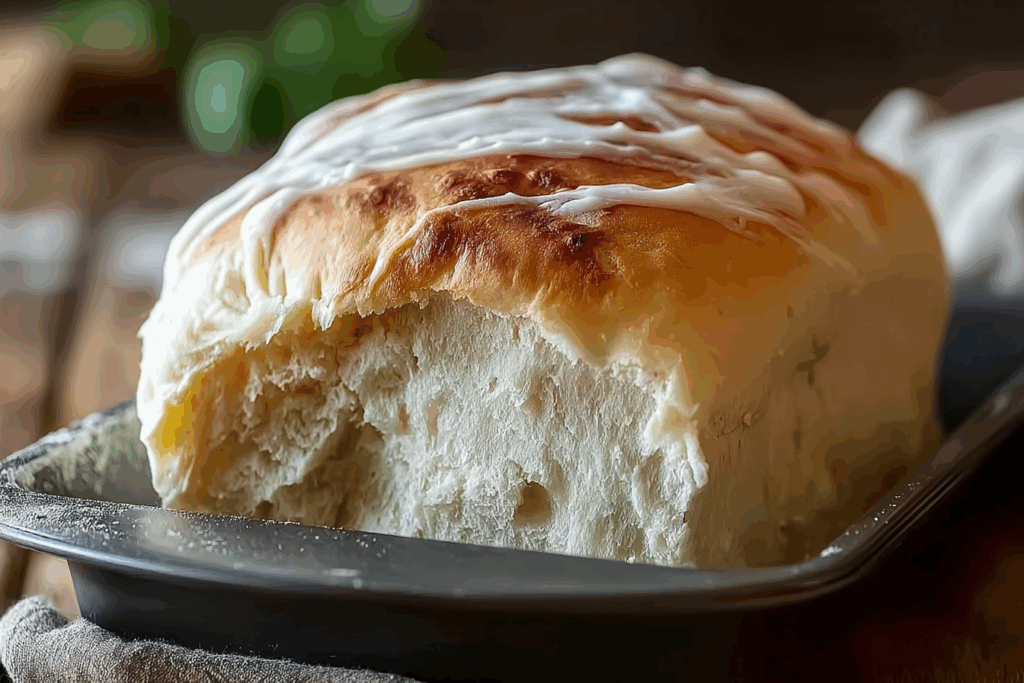
Instructions for Making Soft Homemade Bread Dough
Now let’s dive into the fun part—turning these simple ingredients into soft, pillowy perfection.
- Preheat Your Equipment:
Warm your oven slightly (then turn it off) to create a cozy environment for the dough to rise. - Combine Ingredients:
In a large bowl, mix warm water, sugar, and yeast. Let it sit for 5 minutes until foamy. Add butter, salt, and half the flour. Stir until combined, then gradually add the rest of the flour until a soft dough forms. - Prepare Your Cooking Vessel:
Lightly grease your bowl with olive oil, then place the dough inside, turning it once to coat. - Assemble the Dish:
Cover the bowl with a towel or plastic wrap and let it rise in a warm spot for about 1 hour or until doubled in size. - Cook to Perfection:
Punch down the dough gently to release air. Shape into loaves or rolls and place on a greased baking sheet or loaf pan. Let rise again for 30 minutes. Bake at 375°F (190°C) for 25–30 minutes until golden brown. - Finishing Touches:
Brush the tops with melted butter right after baking for extra softness and shine. - Serve and Enjoy:
Let the bread cool on a rack for at least 15 minutes before slicing. Enjoy the aroma, the warmth, and that first irresistible bite.
Texture & Flavor Secrets
This dough achieves the ideal balance—soft yet structured, airy yet satisfying. The combination of butter and olive oil ensures moisture, while a slow rise deepens the flavor. The result? A golden crust that gives way to a tender, cloudlike interior.
Cooking Tips & Tricks
Before you roll up your sleeves again, here are a few tips to keep in mind:
- Use high-quality flour for the best texture.
- Add a spoonful of milk powder for extra softness.
- For a rustic look, dust the top with flour before baking.
What to Avoid
Even seasoned bakers can slip up, so here’s what to watch for:
- Don’t add too much flour—it makes the dough dense.
- Avoid over-kneading; the dough should feel elastic, not tough.
- Never skip the second rise; it’s what makes the bread light and fluffy.
Nutrition Facts
Servings: 12
Calories per serving: Approximately 180
Note: These are approximate values.
Preparation Time
Prep Time: 15 minutes
Cook Time: 30 minutes
Total Time: 1 hour 45 minutes (including rising time)
Make-Ahead and Storage Tips
You can prepare this dough a day ahead—just refrigerate after the first rise. When ready to bake, bring it to room temperature and proceed. Once baked, store bread in an airtight container at room temperature for up to 3 days or freeze for up to 3 months. Reheat in a warm oven for that fresh-baked taste.
How to Serve Soft Homemade Bread Dough
Slice it warm with butter and honey, or use it as a base for garlic bread, sandwiches, or bread pudding. Pair it with soups, stews, or even a simple olive oil dip for an unforgettable meal.
Creative Leftover Transformations
Don’t let a single crumb go to waste.
- Turn it into croutons for salads.
- Use stale slices for French toast or bread pudding.
- Toast cubes for homemade stuffing.
Additional Tips
For an extra boost of flavor, sprinkle the dough with sesame seeds before baking. Or, brush with milk for a glossy crust. Keep your yeast fresh—it’s the backbone of great bread.
Make It a Showstopper
Want bakery-level beauty? Shape your dough into braided loaves or rolls. Finish with a dusting of flour or a light butter glaze. The result is as stunning as it is delicious.
Variations to Try
- Herb Bread: Add rosemary and thyme for an aromatic twist.
- Honey Wheat Bread: Swap part of the flour for whole wheat and add honey.
- Cheese Rolls: Mix shredded cheddar into the dough for cheesy bites.
- Garlic Butter Loaf: Brush the dough with garlic butter before baking.
- Sweet Cinnamon Swirl: Add a sugar-cinnamon filling for a dessert-style loaf.
FAQ’s
1. Can I use whole wheat flour?
Yes, but mix it with white flour for a lighter texture.
2. How do I know the dough has risen enough?
It should double in size and spring back slowly when poked.
3. Can I freeze the dough before baking?
Yes, freeze after the first rise, then thaw and bake later.
4. What if my dough is too sticky?
Add flour a tablespoon at a time until it’s soft but not sticky.
5. Can I make this without a mixer?
Absolutely—hand kneading works beautifully.
6. Why is my bread dense?
You may have added too much flour or not let it rise long enough.
7. Can I add milk instead of water?
Yes, milk adds richness and a tender crumb.
8. What’s the best yeast to use?
Active dry or instant yeast both work well for this recipe.
9. How long does baked bread stay fresh?
Up to 3 days at room temperature or longer if frozen.
10. Can I bake this as rolls instead of loaves?
Yes, just reduce baking time to 18–20 minutes.
Conclusion
There you have it—a soft, homemade bread dough that’s simple, reliable, and endlessly versatile. Every step, from mixing to that final golden bake, brings you closer to a kitchen filled with the comforting aroma of fresh bread. So roll up your sleeves, trust the process, and enjoy every delicious bite.
Print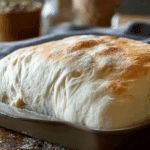
Soft Homemade Bread Dough
- Total Time: 1 hour 45 minutes (including rising time)
- Yield: 12 servings (approx. 1 loaf or 12 rolls) 1x
- Diet: Vegetarian
Description
A soft, pillowy homemade bread dough recipe that yields tender loaves or rolls with a golden crust, perfect for sandwiches, toasting, or dinner sides.
Ingredients
- 4 cups all-purpose flour
- 1 1/2 cups warm water (about 100°F to 110°F / 38°C to 43°C)
- 2 1/4 teaspoons active dry yeast (1 packet)
- 2 tablespoons granulated sugar
- 1 1/2 teaspoons salt
- 2 tablespoons unsalted butter, softened
- 1 tablespoon olive oil
Instructions
- Preheat Your Equipment: Warm your oven slightly then turn it off to create a cozy spot for rising, or find a warm draft-free place in your kitchen.
- Combine Ingredients: In a large bowl stir warm water, sugar, and yeast. Let sit 5 minutes until foamy. Add softened butter, salt, and half the flour. Stir to combine and gradually add remaining flour until a soft, slightly tacky dough forms.
- Prepare Your Cooking Vessel: Lightly grease a large bowl with olive oil. Place the dough in the bowl, turning once to coat with oil, then cover with plastic wrap or a kitchen towel.
- Assemble the Dish: Let the dough rise in a warm spot until doubled in size, about 1 hour. Punch down gently, shape into loaves or rolls, and place in a greased loaf pan or on a baking sheet.
- Cook to Perfection: Let shaped dough rise a second time about 30 minutes. Preheat oven to 375°F (190°C). Bake loaves 25 to 30 minutes or rolls 18 to 20 minutes until golden brown and hollow-sounding when tapped.
- Finishing Touches: Brush warm bread with melted butter for extra softness and shine. Let cool briefly on a rack to set the crumb.
- Serve and Enjoy: Allow bread to cool 15 minutes before slicing, then serve warm with butter, soups, or use for sandwiches.
Notes
- Use lukewarm water to proof yeast, not hot, to avoid killing it.
- Adjust flour a tablespoon at a time if the dough is too sticky; avoid adding too much flour to keep bread soft.
- For extra softness add 1 to 2 tablespoons of milk powder to the dry ingredients.
- To store, cool completely then keep in an airtight container at room temperature up to 3 days or freeze slices up to 3 months.
- Prep Time: 15 minutes
- Cook Time: 30 minutes
- Category: Bread
- Method: Baking
- Cuisine: International
Nutrition
- Serving Size: 1 slice (approx. 50 g)
- Calories: 180
- Sugar: 2 g
- Sodium: 180 mg
- Fat: 5 g
- Saturated Fat: 2.5 g
- Unsaturated Fat: 2 g
- Trans Fat: 0 g
- Carbohydrates: 30 g
- Fiber: 1.5 g
- Protein: 5 g
- Cholesterol: 10 mg
Keywords: soft homemade bread dough, homemade bread, easy bread recipe, soft bread, dinner rolls, sandwich loaf

